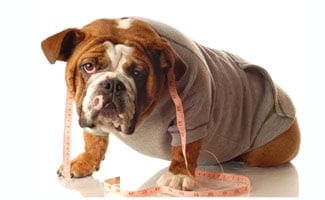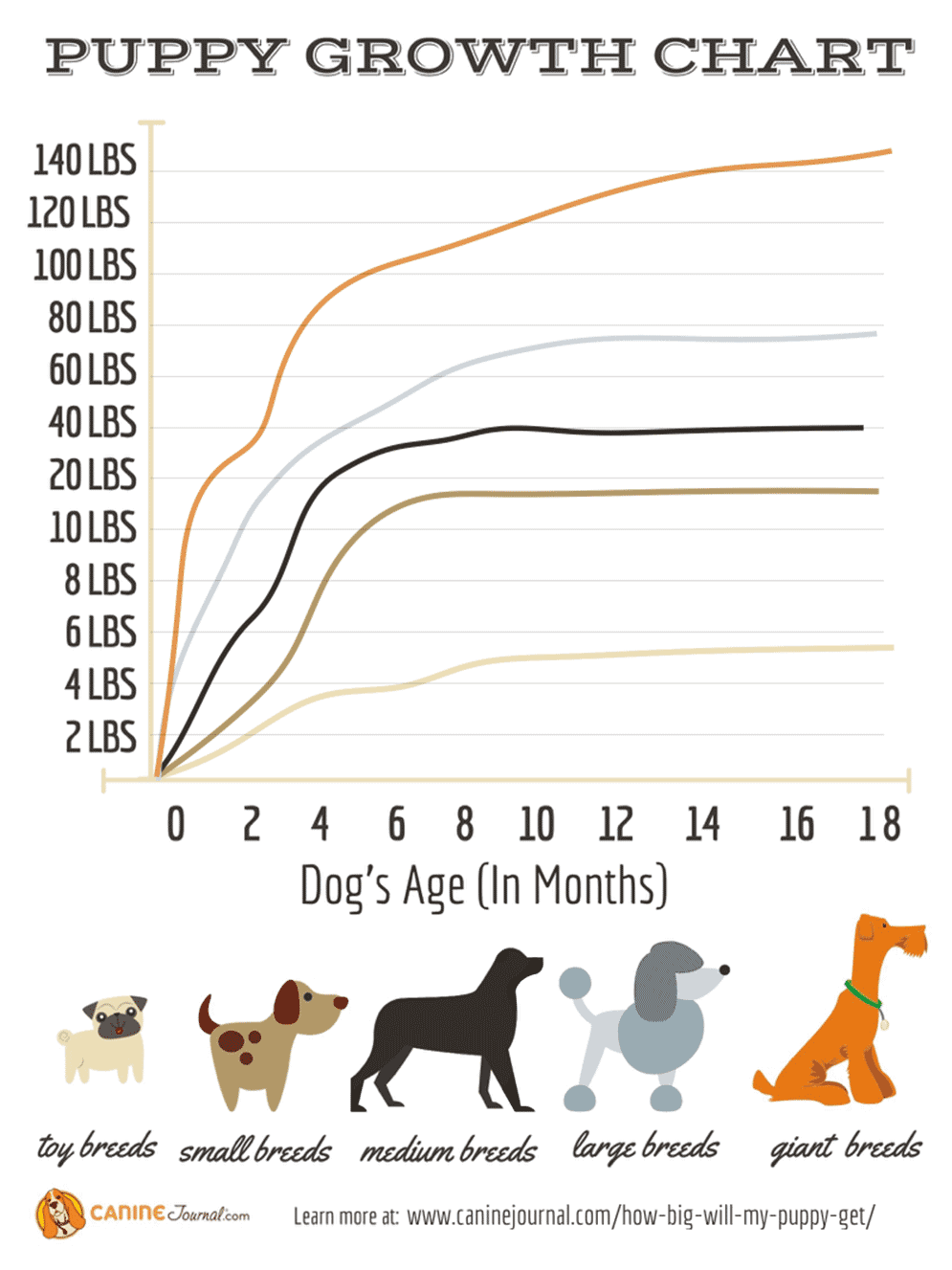How Big Will My Puppy Be When He’s An Adult Dog?
To sustain this free service, we receive affiliate commissions via some of our links. This doesn’t affect rankings. Our review process.

Article Overview
How Big Will My Puppy Get?
In general, an adult average-sized dog at 12 months old weighs about 2-1/2 times their weight at 14 weeks or twice their weight at 4 months of age. But these are over-generalized estimates that don’t take some other factors into account, including:
- Breed: Dogs’ growth rates and full-grown size vary widely by breed type. See our section below that breaks down breed sizes.
- Parents: If you’re lucky enough to see your puppy’s parents, you can get a pretty good idea of how big your puppy will get based on their sizes.
- Gender: As with humans, male puppies will typically be larger than females.
- Neutering/Spaying: Puppies that are neutered or spayed early can weigh a bit more and be slightly taller than average as adults. Why? The procedure can somewhat alter the chemical signals that tell the body to stop growing on its normal path.
Is Paw Size A Good Predictor?
You may have heard that a puppy’s paw size can give you an idea of how big your puppy will get, but that’s not always an accurate predictor. Why? Paw size can depend on the breed. For example, there are some larger dog breeds, like Collies, that have small paws for their size. And some small to medium-sized breeds, like Bulldogs, have large paws for their size.
Dog Weight Estimator By Breed Size
As we mentioned above, a dog’s growth rate varies by breed. So there are different formulas to predict their adult weight by the general breed size. Dog breeds are generally broken into five categories by size, but keep in mind there is some overlap with dogs on the lower and higher end of each category.
See average weight ranges and neck sizes for 100+ of the most popular breeds.
Toy Breeds
Toy breeds grow faster than larger breeds and stop growing between 8 and 9 months of age. Most of their growth happens between 0-11 weeks. On average, they gain about 5-10% of their body weight each day (roughly 1-5 oz per week). To best predict a toy’s adult size, you’ll want to take their 6-week weight, double it and then double it again. So a puppy who weighs 2 pounds at 6 weeks will weigh approximately 8 pounds as an adult (2×2=4, 4×2=8).
Some popular toy breeds include the Chihuahua, Maltese, Pekinese, Pomeranian, Shih Tzu, Toy Poodle and Yorkshire Terrier.
Small Breeds

Some popular small breeds include the Beagle, Dachshund, French Bulldog, Jack Russell Terrier, Pug, Shetland Sheepdog and West Highland White Terrier.
Medium Breeds

Some popular medium breeds include the Basset Hound, Border Collie, Bulldog, Cocker Spaniel, English Springer Spaniel, Staffordshire Bull Terrier and Whippet.
Large Breeds

- Divide their weight at 20 weeks by their current age in weeks and multiply by 52. So for a puppy who weighs 35 pounds at 20 weeks: 35÷20=1.75, 1.75×52=91 pounds.
- Simply double their weight at 6 months of age.
Some popular large breeds include the Boxer, Bloodhound, Doberman Pinscher, German Shepherd, Golden Retriever, Labrador Retriever, Rottweiler and Standard Poodle.
Giant Breeds

- Divide their weight at 20 weeks by their current age in weeks and multiply by 52. So for a puppy who weighs 45 pounds at 20 weeks: 45÷20=2.25, 2.25×52=117 pounds.
- Double their weight at 6 months of age.
Some popular giant breeds include the Great Dane, Irish Wolfhound, Mastiff, Newfoundland and Saint Bernard.
What If You Don’t Know The Breed?

Also, if you adopt a puppy from a shelter, they may be able to give you some idea of the suspected breed makeup.
How To Predict A Dog’s Height
To predict your puppy’s adult height, measure his height at 6 months of age. Then multiply this figure by 100 and divide that answer by 75. In other words, puppies achieve about 75% of their adult height at 6 months old.
A dog’s height is measured from the top of their shoulders to the floor (not the top of their head like we do for humans). Measure your dog on a flat surface and make sure he’s fully upright and his legs are vertical rather than splayed out.
Puppy Growth Chart

To share this infographic on your site, simply copy and paste the code below:
7 Stages Of Puppy Growth
Want to know the details about puppy development? Learn about the pivotal physical and mental stages of puppy growth in this 6-minute video.
What Do I Need To Consider For An Adult Dog?
Now that you have a general idea about how big your puppy will get, you have a better idea of the size collar and crate he’ll need once he’s an adult. See our handy guide on dog collar sizing and fitting, which also includes the average neck sizes for 100+ breeds.
Also, be sure to check out our recommendations for the best collars and crates for dogs of all sizes. And learn more about when to switch a puppy to adult dog food.
Are you worried that your dog will be much bigger than you expected?






how to get zithromax online https://zithromaxbestprice.icu/ zithromax buy online no prescription